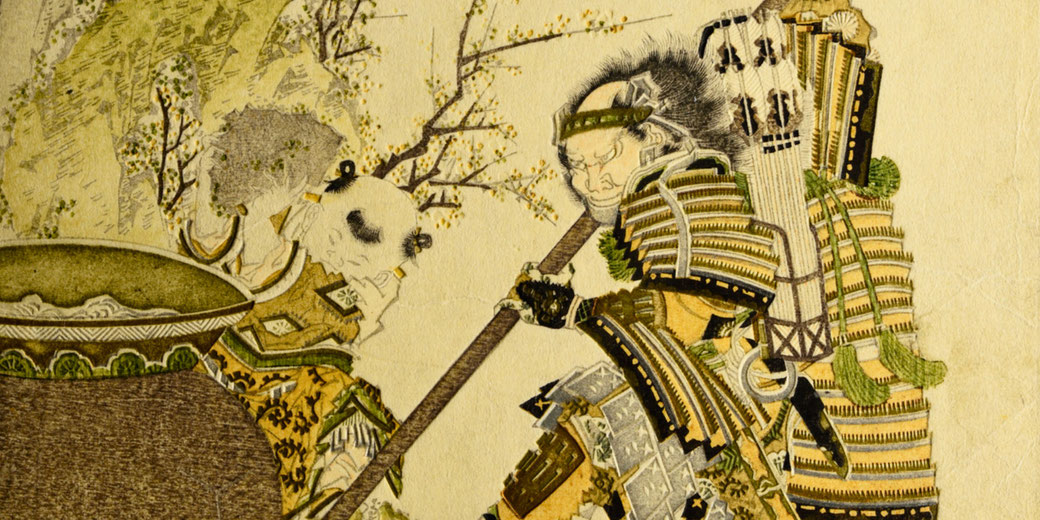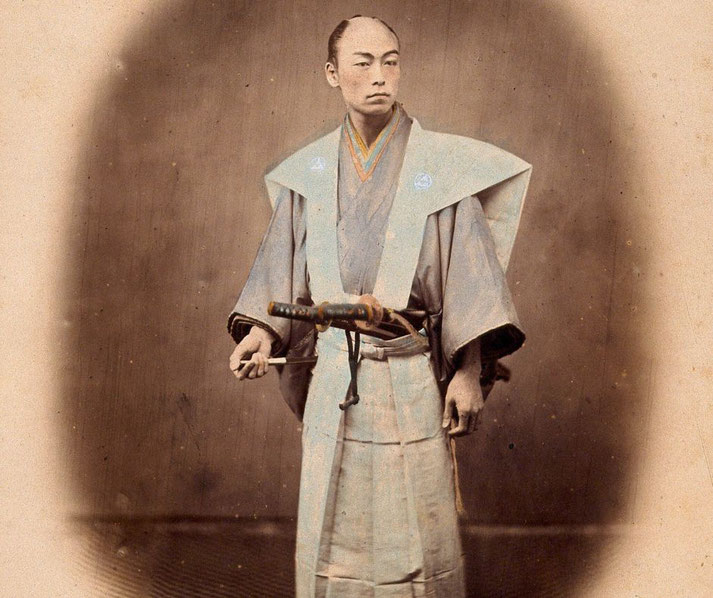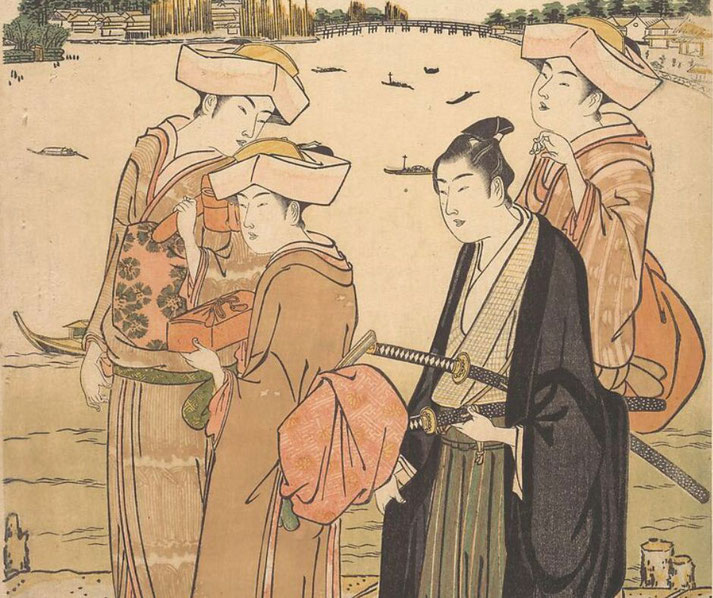What were the Japanese samurai?

The samurai were one of the four social classes in Japanese society. They were highly trained soldiers that were trained in the use of both bows and swords.
The samurai were an essential part of Japanese armies during the feudal period.
Origins of the samurai
The samurai first appeared in 10th century AD in the Heian Period. A new system of military service created private armies who were paid for by local warlords, known as ‘daimyo’.
The original meaning of the word ‘samurai’ was ‘to serve’.
Theoretically, the samurai existed to serve the Japanese emperor. However, in reality, they served an individual daimyo who was willing to pay for their help.

Service to the daimyo
Although the daimyo controlled the lands of Japan, their power depended on the samurai under their control.
Samurai swore oaths of loyalty to their daimyo and protected his lands from robbers and rebels while he was travelling or away.
Most importantly, they fought for the daimyo when wars took place. Samurai, therefore, needed to be ready to fight at a moment’s notice, and were sometimes housed in specialised military barracks or castles.
The more rich and powerful a daimyo became, the more samurai he could afford.
Ultimately, the most successful daimyo even used their samurai armies to seize ultimate control of Japan from the emperor himself.
The Japanese emperor was forced to create a new military position to recognise the most powerful daimyo: the shogun.
Bushido code
Samurai warriors were meant to follow a strict code of behaviour known as the ‘bushido’ code.
This code emphasised the values of honesty, loyalty, bravery, respect and honor.
A samurai’s first responsibility was to faithfully serve his daimyo. This meant that they should be willing to die, if necessary, to do so.
It was common to die for your daimyo in battle, but samurai were also expected to fight duels if the mere honour of their lord was questioned.
During the Edo period of Japanese period (1603-1868) different ranks of samurai warriors were developed:
- Gokenin: this was the lowest rank
- Goshi: this rank work as farmers as well, but had to give up some of their special privileges
- Hatamoto: this was the highest rank, and these became the only rank that was expected to die for their lord
Training: how to become a samurai
Japanese samurai underwent a rigorous and comprehensive training regimen that encompassed physical, mental, and spiritual aspects.
The ultimate goal of this training was to produce warriors who were skilled in both armed and unarmed combat, as well as knowledgeable in the arts, culture, and strategic thinking.
Since ‘samurai’ was a social class, not a career, children were born as samurai. Young boys of this class began military training from an early age.
Physical training involved honing their skills with weapons such as the katana (long sword), wakizashi (short sword), and yari (spear), as well as practicing horseback riding and archery.
The samurai also trained in various martial arts, such as jujitsu and kenjitsu (sword fighting), to improve their hand-to-hand combat abilities.
Mental and spiritual training was equally important for the samurai. They practiced meditation to cultivate self-discipline and studied the tea ceremony.
Many daimyo set up specialised schools. Surprisingly, samurai warriors were also taught sophisticated reading and writing, particularly poetry and calligraphy.
Overall, the training of the Japanese samurai was aimed at producing warriors who were not only physically capable, but also morally upright and culturally sophisticated members of the nobility.

Ronin: when samurai go bad
Since samurai culture was so heavily invested in the idea of loyalty to a daimyo lord, what happened if a daimyo died?
Some samurai would leave to find a new lord to serve.
However, others took the opportunity to wander freely. Samurai who had no master were called ‘ronin’.
There was no set rule for what a ronin should do, because he was his own master. Many ronin became ‘swords for hire’ and would fight for any daimyo who was willing to pay.
Other ronin became nothing more than robbers and thieves, using their military skills to intimidate peasants.
Some famous ronin include:
He was a legendary swordsman who is considered one of the greatest martial artists of all time. He wrote "The Book of Five Rings", which is still widely read and studied today as a classic treatise on strategy and tactics.
Yamamoto Kansuke:
He was a famous strategist who served as a military advisor to several lords during the Warring States period in Japan. He was known for his clever tactics and strategic thinking, and was widely respected for his wisdom and courage.
Kira Kozukenosuke Yoshinaka:
He was a notorious ronin who was widely feared for his martial abilities and cunning. He was involved in several power struggles and was eventually killed by the legendary ronin Miyamoto Musashi.
Oishi Kuranosuke Yoshio:
He was best known for leading the forty-seven ronin, a group of masterless samurai who sought to avenge the death of their lord. This event is a famous story in Japanese history and is considered a classic example of samurai loyalty and honor.
The fall of the samurai
During the two-century peace of the Tokugawa shogunate, there was little need for trained warriors.
As a result, many samurai families focused more on government jobs that involved administration duties or running businesses.
By the mid-19th century, when western nations introduced gunpowder weapons to Japan, there was no need for a samurai social class at all.
During the Meiji period, the samurai class was disbanded forever.

What do you need help with?
Download ready-to-use digital learning resources
Copyright © History Skills 2014-2025.
Contact via email
With the exception of links to external sites, some historical sources and extracts from specific publications, all content on this website is copyrighted by History Skills. This content may not be copied, republished or redistributed without written permission from the website creator. Please use the Contact page to obtain relevant permission.





